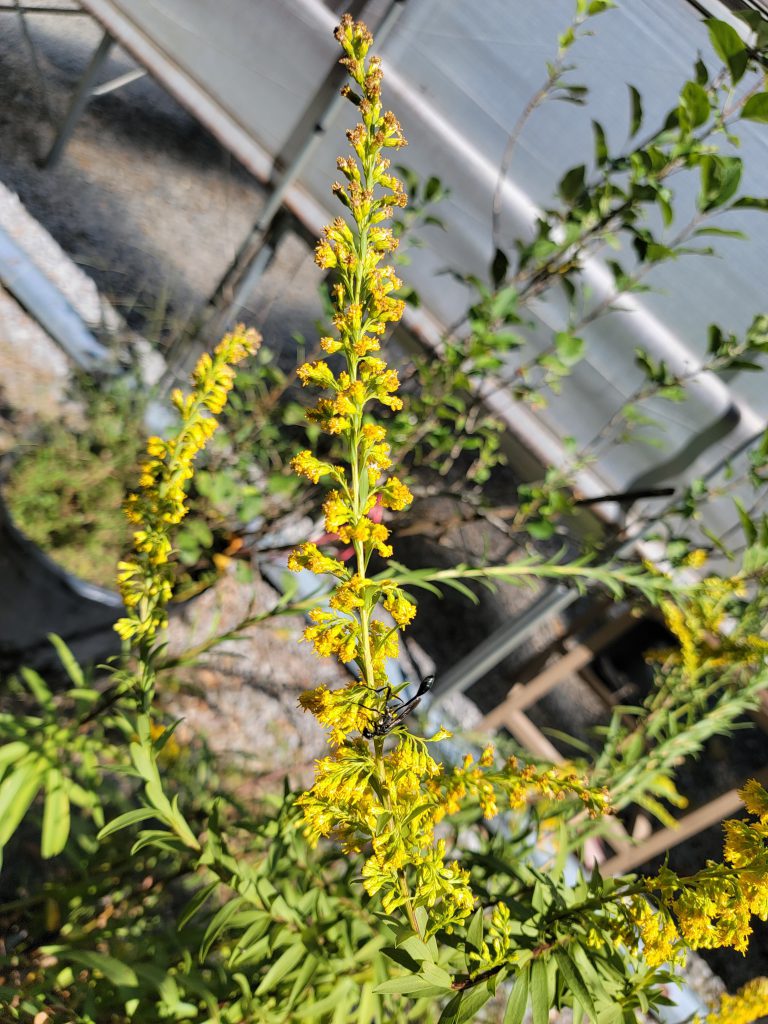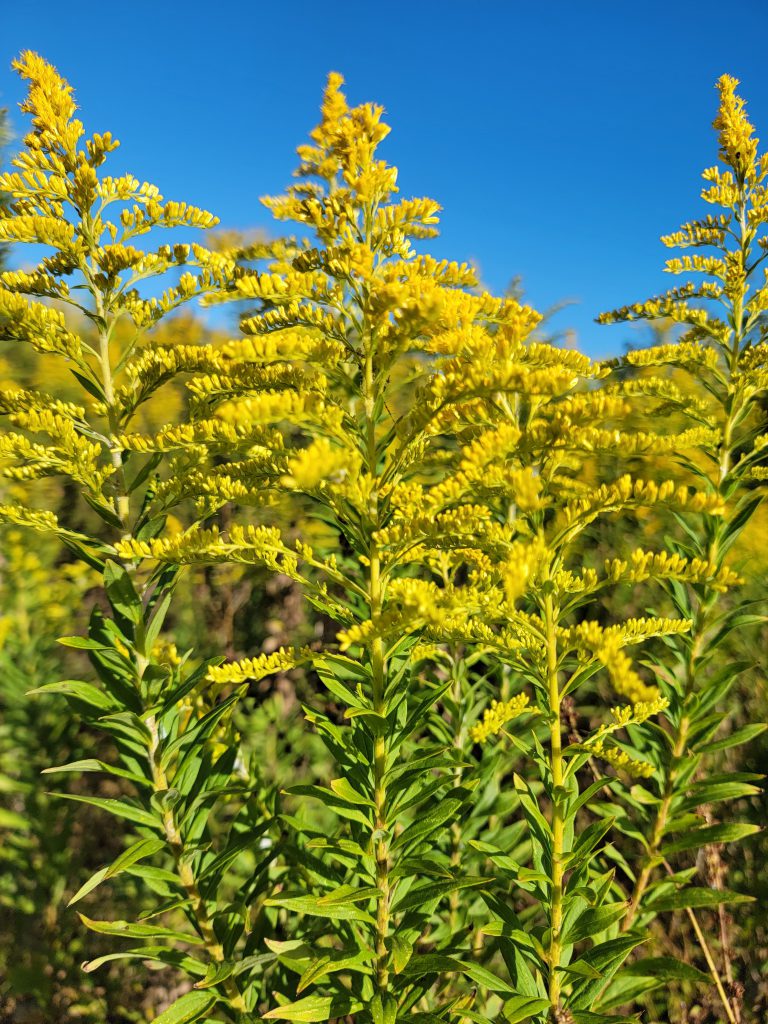Autumn Blooms
The days are getting shorter, the sun setting earlier each day, and the temperatures are beginning to dip. All the signs are there, we’ve reached autumn which means it’s time for many roadside wildflowers to begin their bloom cycle. Surely, you’ve seen them as you drive down the road, small colorful patches in the ditch or as almost blinding yellows across vast fields. The vibrant yellow in this latter example is that of goldenrod (Solidago spp.). A name attributed to many plants in Asteraceae better known as the Daisy family, they serve to feed pollinators when other plants begin to fade. Two of the most common in the panhandle are seaside goldenrod (Solidago sempervirens) and Canada goldenrod (Solidago canadensis).
Coastal Goldenrod
Seaside goldenrod will be most prevalent in the coastal counties along the panhandle. It thrives on beach dunes in tidal marshes and disturbed coastal areas. Tolerance to saline soils and sea spray allow growth in these environments. A clumping perennial, it grows to 6.6 feet clumping with a 1.6 foot spread. The flowers of this plant bloom in autumn on a spiked inflorescence as tubular disk florets. They are pollinated by several types of insects and birds. This plant was used as far back as the Roman times to treat several medical conditions.
Inland Goldenrod
Canada goldenrod is found in Florida almost exclusively in the panhandle with a few pockets as holdouts in the peninsula. Not as common along the coast, this plant prefers to take hold in ditches and open meadows. At 1-7 feet tall with it spreads via underground stems known as rhizomes. Rhizomatous plants such as these are traditionally difficult to control and may become weedy in some situations. Yellow ray style flowers present in clusters at the end of stems on drooping panicles. Pollen form this plant is often blamed for fall allergies, but does not tend to travel far on the wind making this an unlikely source. As with the seaside goldenrod, this plant was used traditionally as a medicine in ancient times.
Summing it up
Goldenrod along with many autumn blooming wild flowers may be something you’ve put very little thought into. They are proven winners in terms of late season pollinator support. Often overlooked in the home landscape, plants like goldenrod may bring a new twist to your home gardens. They require little water and fertilizer and grow well in our area. For more information on Florida wildflowers, see these Ask IFAS documents, or contact your local extension agent for additional information on this and any topic regarding your gardens and more.
- Consider Chestnuts for Your Landscape - December 26, 2025
- Cold Protection for North Florida - November 6, 2025
- Planning and Planting for Wildlife - October 10, 2025


